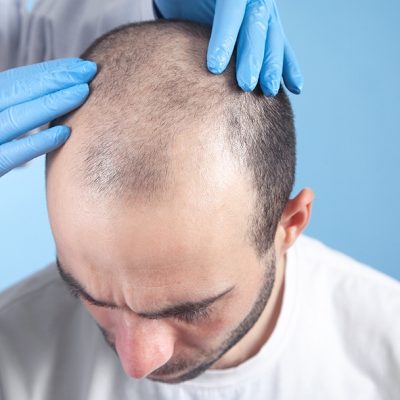Hair loss can have a profound impact on self-esteem and confidence, prompting many individuals to seek effective solutions. Among these, Scarless Hair Transplant in Dubai techniques have gained popularity for their ability to deliver natural-looking results with minimal recovery time. This guide explores the benefits of scarless hair transplants, highlighting how they offer less downtime and better results compared to traditional methods.
Understanding Scarless Hair Transplant Techniques
Scarless hair transplants, primarily using the Follicular Unit Extraction (FUE) and Direct Hair Implantation (DHI) methods, are designed to extract individual hair follicles from the donor area and implant them into the thinning or balding areas of the scalp. Unlike traditional hair transplants, which often involve a linear incision and can leave noticeable scars, these advanced techniques are minimally invasive, resulting in virtually no scarring.
How Scarless Techniques Work
- Follicular Unit Extraction (FUE):
- In FUE, individual hair follicles are extracted using a specialized punch tool. The surgeon carefully removes follicles from the donor area, usually the back of the head, and then implants them into the recipient site. This method leaves tiny, dot-like scars that are often barely visible.
- Direct Hair Implantation (DHI):
- DHI takes FUE a step further by using a specialized device to implant the extracted follicles directly into the scalp. This technique allows for more precise placement of hair follicles, leading to a denser and more natural-looking result. DHI also minimizes handling of the follicles, preserving their viability and promoting better growth.
Benefits of Scarless Hair Transplants
1. Minimal Downtime
One of the most significant advantages of scarless hair transplants is the reduced recovery time. Patients often experience less discomfort and swelling compared to traditional methods, allowing them to return to their daily activities more quickly.
- Faster Recovery: Most patients can resume light activities within a day or two, while more strenuous exercises can typically be resumed in about a week.
- Less Post-Operative Care: With minimal scarring, patients require less extensive aftercare, making the recovery process more straightforward.
2. Natural-Looking Results
Scarless hair transplants are designed to provide natural-looking results that blend seamlessly with the patient’s existing hair.
- Customizable Hairline: Surgeons can tailor the hairline to suit individual facial features, resulting in a more aesthetically pleasing outcome.
- Improved Density: Techniques like DHI allow for better control over the angle, direction, and density of the implanted hair follicles, enhancing the overall appearance.
3. Reduced Risk of Complications
Minimally invasive procedures generally carry a lower risk of complications compared to traditional hair transplants.
- Lower Infection Rates: With less tissue trauma and fewer incisions, the risk of infection is significantly reduced.
- Less Bleeding: The techniques used in scarless hair transplants minimize bleeding, promoting a smoother recovery process.
4. Versatile Applications
Scarless hair transplants are suitable for various types of hair loss, including male and female pattern baldness, receding hairlines, and thinning hair. They can also be used for:
- Eyebrow Restoration: For individuals looking to restore or enhance their eyebrows.
- Facial Hair Transplants: Such as beard or mustache transplants for men.
5. Long-Lasting Results
When performed by a skilled surgeon, scarless hair transplants can yield permanent results. The transplanted hair follicles retain their genetic characteristics, allowing them to grow in their new location as they would naturally.
- Sustained Growth: Patients can expect to see significant growth within 6 to 12 months post-procedure, with results continuing to improve over time.
- Maintenance: While the transplanted hair is permanent, ongoing care and maintenance may be recommended to ensure optimal results.
What to Expect During and After the Procedure
Before the Procedure
Prior to the transplant, patients will undergo a thorough consultation with the surgeon. This includes:
- Assessment of Hair Loss: Evaluating the extent of hair loss and determining the best approach for treatment.
- Discussion of Goals: Understanding the patient’s expectations and desired outcomes.
- Pre-Operative Instructions: Patients will receive guidelines on preparing for the procedure, including any medications to avoid.
During the Procedure
The procedure typically involves the following steps:
- Anesthesia: Local anesthesia is administered to ensure the patient’s comfort throughout the procedure.
- Extraction: Follicles are extracted from the donor area using the chosen technique (FUE or DHI).
- Implantation: Extracted follicles are carefully implanted into the recipient area.
The entire process usually takes several hours, depending on the number of grafts being transplanted.
After the Procedure
Post-operative care is crucial for achieving the best results. Key considerations include:
- Avoiding Strenuous Activities: Patients should refrain from heavy exercise for at least a week to minimize swelling and promote healing.
- Follow-Up Appointments: Regular check-ups with the surgeon will help monitor healing and hair growth progress.
- Gentle Care: Patients should be gentle with their scalp, avoiding harsh products or excessive manipulation of the hair.
Conclusion
Scarless hair transplants offer an innovative solution for those seeking to restore their hair without the drawbacks of traditional methods. With less downtime, natural-looking results, and a lower risk of complications, these advanced techniques are becoming the preferred choice for many individuals experiencing hair loss. If you’re considering a hair transplant, consult with a qualified specialist to explore the benefits and determine if a scarless approach is right for you. Your journey to fuller, healthier hair could be just a consultation away.






Comments